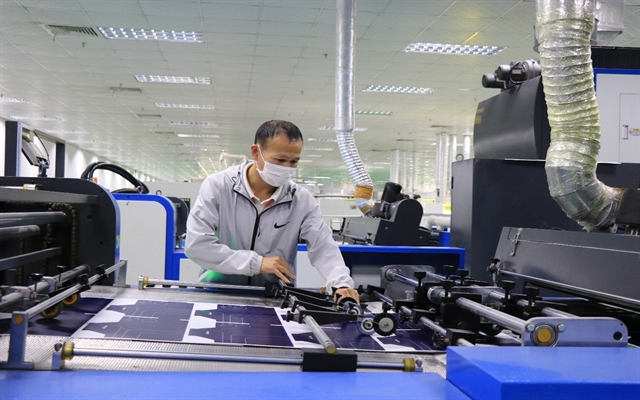 Economy
Economy

 |
| A garment production company in Hưng Yên. — VNA/VNS Photo Trần Việt |
HÀ NỘI — Việt Nam’s Index of Industrial Production (IIP) recorded a slight increase of 0.6 per cent year-on-year in January, although showing a significant 9.2 per cent month-on-month decline, according to the General Statistics Office (GSO).
The fall was attributed to fewer working days in January due to the Lunar New Year (Tết) holiday, GSO reported.
Breaking down sector performance, the manufacturing and processing sector saw a 1.6 per cent year-on-year rise, while electricity production and distribution increased by 0.4 per cent. Notably, the water supply and wastewater treatment sector posted an impressive 9.2 per cent growth.
By contrast, the mining sector was the only industry to experience a downturn, plummeting 10.4 per cent compared to the same period last year.
Several industries recorded strong IIP growth, including vehicle production (34 per cent), furniture (11 per cent), leather and leather products (10.3 per cent), and electronics, optical products and computers (3.8 per cent).
However, some sectors reported significant declines, such as coal mining (down 20 per cent), crude oil and natural gas extraction (6.5 per cent), pharmaceuticals (29 per cent), electrical equipment (12 per cent), and chemicals and chemical products (8.2 per cent).
A total of 47 out of 63 centrally-run cities and provinces recorded an increase in IIP, while 16 reported declines.
Some localities saw particularly strong growth due to a surge in processing and manufacturing activities in January, including Nam Định (30 per cent), Bắc Kạn (28 per cent), Bến Tre (24 per cent) and Hải Phòng (16 per cent).
Counter to that several key industrial hubs posted a negative growth in the month, including such as Bắc Ninh, down 16 per cent, Bình Dương (14 per cent),HCM City (9 per cent), Hà Nội (8.3 per cent) and Đồng Nai (6 per cent).
The number of workers employed in industrial enterprises as of January 1, 2025, rose 0.2 per cent from the previous month and 4.5 per cent year-on-year, signaling a steady recovery in the sector.
Output falls for first time in four months
The S&P Global Vietnam Manufacturing Purchasing Managers' Index (PMI) dropped to 48.9 in January, down from 49.8 in December and remaining below the 50 no-change threshold for the second consecutive month.
According to S&P Global, the decline in operating conditions was modest, but slightly more pronounced than in the previous survey period.
For the first time in four months, new orders fell in January, with businesses citing weak customer demand. The decline in total new business was partially due to a continued drop in export orders, which have now decreased for three consecutive months.
This decline in demand led to a fall in production, also for the first time in four months. However, the rate of output contraction remained slight, mirroring the trend in new business.
As new orders slowed, manufacturing firms found themselves with spare capacity, leading to a depletion of backlogs of work for the first time in eight months.
Economics Director at S&P Global Market Intelligence, Andrew Harker, described the start of 2025 as disappointing for Vietnamese manufacturers, with subdued demand resulting in lower orders, reduced output and a more significant cut in employment.
However, there was some relief on the pricing front, as slower cost inflation allowed firms to lower selling prices to stimulate demand.
Despite the weak start, manufacturers were more optimistic compared to late 2024. S&P Global Market Intelligence forecasts 4.6 percent growth in industrial production for 2025, suggesting potential improvements in the months ahead. — VNS




